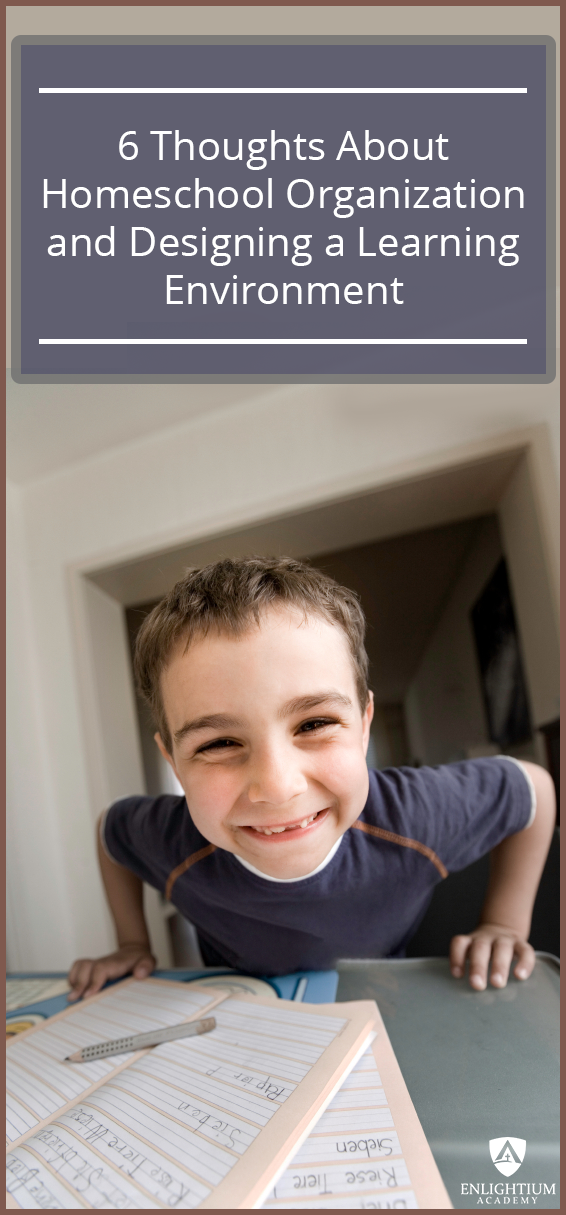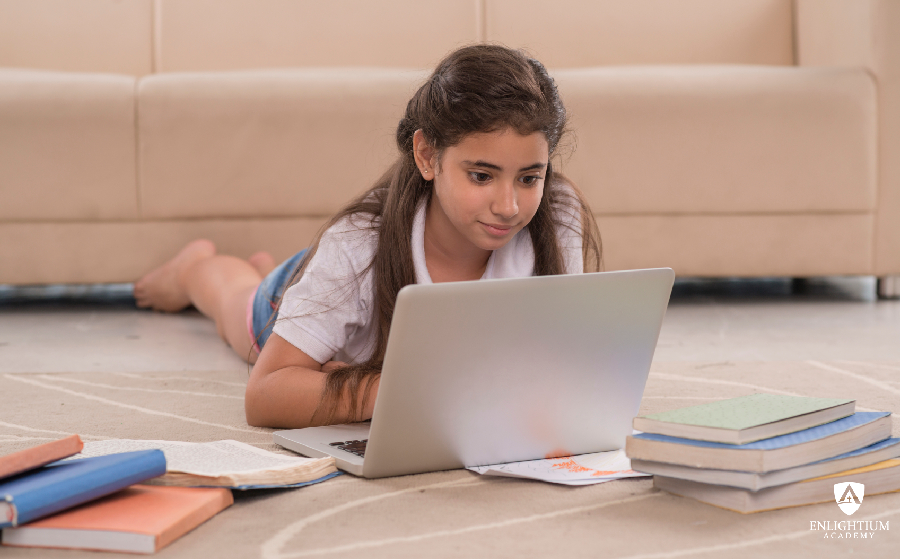6 Thoughts About Homeschool Organization and Designing a Learning Environment
One of the advantages that homeschooling families have is the ability to design a learning space for their students in their own home. Social media sources like Pinterest and online blogs are full of ideas for homeschool organization. These sources often emphasize the importance of designing a learning space that fits the needs of your family.
Today, I would like to take this idea one step further and suggest that the ideal learning space may not be the same for each family member. What is seen as ideal by a parent may not in fact be ideal for a student. What qualifies as an ideal learning space may even differ from child to child.
At this year’s ACSI conference, I heard Cynthia Tobias speak about learning styles. In her presentation, Tobias made it clear that effective education takes students’ different learning styles into account - and students’ learning environment is a part of that. As Tobias explains in her book, The Way They Learn, allowing students to create different learning environments for themselves can also be a big step towards helping them to be motivated and focused.
I passionately believe that God has created each of us in His own image, and also that we do not all reflect that image in the same way. It makes sense to me that we should honor those differences that God created in us, and that doing so has an immediate impact on how we support students in their learning. If all students are created differently, they may well thrive in wildly different learning environments.
Here are the six factors that Tobias credits for playing a big role for learning environments and homeschool organization practices:
Location
The traditional ideal for a learning location is a seat (not too hard and not too soft) at a desk or table. For many learners this is a good way to achieve focus. I can also tell you from personal experience that this is not true for everyone. If I am sitting in stationary chair at a table I invariably find myself fidgeting and distracted. Tobias herself states that her preference is to work while sitting on the floor.
Noise Level

I have a friend who needs absolute silence in order to work. In college it was torture for her if someone more noisy than she invaded the quiet section of the university library. On the other end of the spectrum, I find it much easier to focus when I can listen to music at a low volume through headphones. This seems unbelievable to many people I know. The radical idea that Tobias suggests (which is based in research), is that one noise level is not better than another, it is only better for individual learners.
Lighting
We’ve all been told that reading with bad light will damage our eyes, and I’m not going to argue against that. However, the quality of light can be an important factor. For some students it is preferable to have less bright “soft light” and harsh light can be distracting. Some students highly value natural light. Some students don’t care. Once again, it depends on the individual student.
Temperature
This factor is highly tied to students’ physical comfort level. When I was growing up my mother spent a lot of time sitting in bed with a lap-desk because she gets cold easily. On the other hand, a coworker of mine gets overheated very quickly, and that is more distracting to her than almost anything else.
Food and Drink
Most public schools have a hard rule: no food and drink in the classroom (which I suspect has as much to do with potential for messes as anything else). At the same time we all know how difficult it is to concentrate while hungry. Wouldn’t it be more useful just to allow students a few snacks or, for those who are distracted by eating like me, at least a beverage?
Internal Time Clock
My mother has always said that she thinks my brother would have done better in school if he could have started his day around noon. Allowing a night-owl student to do school work in the evenings may sound risky, but what if it works? What about students who need to take frequent breaks? Some people like to work in bursts of high activity, while others like to “remain in the zone” for longer periods of time.
As you work on homeschool organization, my suggestion is to be intentional about creating a learning space, and to allow your student(s) to be part of the decision making process. If your student suggests something that seems strange or impractical to you, allow for the possibility that it might be effective for him or her. For those situations Cynthia Tobias suggests giving the idea a two week trial. Make a deal with the student that if he or she can achieve an effective study pattern within his or her chosen learning environment in that time, it may be allowed to continue. If not, he or she will need to try it a different way. It may be worth a try.

